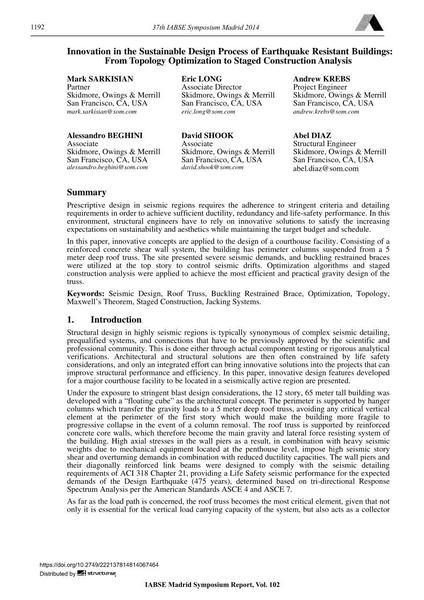Innovation in the Sustainable Design Process of Earthquake Resistant Buildings: From Topology Optimization to Staged Construction Analysis

|
|
|||||||||||
Bibliografische Angaben
| Autor(en): |
Mark Sarkisian
Eric Long Andrew Krebs Alessandro Beghini David Shook Abel Diaz |
||||
|---|---|---|---|---|---|
| Medium: | Tagungsbeitrag | ||||
| Sprache(n): | Englisch | ||||
| Tagung: | IABSE Symposium: Engineering for Progress, Nature and People, Madrid, Spain, 3-5 September 2014 | ||||
| Veröffentlicht in: | IABSE Symposium Madrid 2014 | ||||
|
|||||
| Seite(n): | 1192-1199 | ||||
| Anzahl der Seiten (im PDF): | 8 | ||||
| Jahr: | 2014 | ||||
| DOI: | 10.2749/222137814814067464 | ||||
| Abstrakt: |
Prescriptive design in seismic regions requires the adherence to stringent criteria and detailing requirements in order to achieve sufficient ductility, redundancy and life-safety performance. In this environment, structural engineers have to rely on innovative solutions to satisfy the increasing expectations on sustainability and aesthetics while maintaining the target budget and schedule. In this paper, innovative concepts are applied to the design of a courthouse facility. Consisting of a reinforced concrete shear wall system, the building has perimeter columns suspended from a 5 meter deep roof truss. The site presented severe seismic demands, and buckling restrained braces were utilized at the top story to control seismic drifts. Optimization algorithms and staged construction analysis were applied to achieve the most efficient and practical gravity design of the truss. |
||||
| Stichwörter: |
Erdbebenbemessung
|
||||
